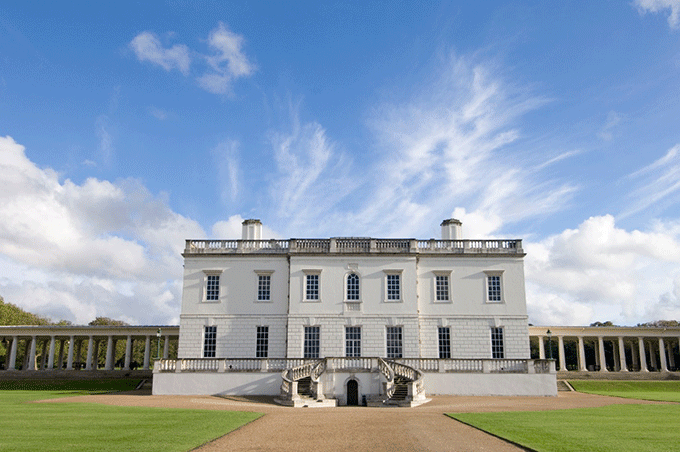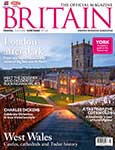With Tudor Times we profile a different figure every month. Here, Melita Thomas looks at Anne of Denmark. Although not strictly a Tudor, she was the first ‘Queen of Great Britain’ following Elizabeth I’s death.

Anne of Denmark (1574-1619), wife of King James VI & I, collected quite a few ‘firsts’. She was the first woman to be queen of both Scotland and England, the first crowned as Queen Consort in a Protestant ceremony in either country, the first foreign-born English queen since Anne of Bohemia in 1382 who did not come from France or Iberia, and the only queen – so far, at least –to have a mother-in-law (Mary, Queen of Scots), and son, (Charles I), who were executed for treason against the English state.
Anne was born at a time of turmoil in Europe – the Protestant states of northern Germany and Scandinavia were resisting the Catholic powers of France and Spain and were looking for allies. Anne’s father, Frederick II of Denmark and Norway, had once been a suitor for Elizabeth I, and the prospect of marrying his daughter to Elizabeth’s likely heir, James VI of Scotland was attractive.
For the Scots, a match with Denmark could solve the ongoing dispute over the Orkney and Shetland Islands, pledged to Scotland for the payment of a previous Danish bride, but never redeemed. Denmark was also an important trading partner.
In 1589, terms were agreed, and Anne set out, accompanied by 18 ships full of her clothes and furniture, including a coach whose fittings were made of silver, rather than iron, and caskets full of jewels, mainly pearls. En route, her fleet was scattered by storms, so that Anne was obliged to take refuge in Oslo.
James, full of romantic notions, set sail himself to fetch his bride, and arrived in Oslo in November. Anne, brought up at the formal Danish court, was surprised when James attempted to kiss her at their first meeting, but this was only the beginning of the astonishment Anne would feel at the informal manners of the Scottish court.

After a winter spent in Denmark, during which James became convinced the storms had been brewed by witchcraft, they returned to Scotland. The coincidence of Lady Kennedy, whom James had appointed as Anne’s lady-in-waiting, also drowning in a freak storm, led to James becoming obsessed with witchcraft, and trials and executions took place all over Scotland.
Anne was crowned queen at Holyrood shortly after her arrival, and was given the palaces of Linlithgow, Falkland and the former Dunfermline Abbey. Dunfermline became a favourite with her, and she implemented the construction of a new palace over the old Abbey guesthouse.
The royal couple were as fond of each other as most royal couples. James had a protective attitude to Anne, but this was sometimes strained as the Queen was easily offended, perhaps taking the more free-and-easy Scottish manners as disrespect. In 1594, however, they had a serious quarrel from which their marriage never really recovered. Mindful of the plots and abduction attempts that had dogged his own childhood, James decreed that Anne’s first-born son, Prince Henry Frederick, should be brought up in safety by the Earl of Mar in the defensible Stirling Castle, rather than allowed to stay with her.
Anne, who had had an unusually close relationship with her own mother, was devastated. James was adamant, and she had to give in, but displaced her anger onto Mar and his mother, whom she already disliked. She never forgave either of them.
Over the next few years, Anne bore several children, although only two others lived to adulthood – Elizabeth, later known as ‘the Winter Queen’ of Bohemia, and Charles.
In 1603, James became King of England, and Anne, following a final showdown over the guardianship of Prince Henry, which this time she won, travelled south with her two oldest children. She made a protracted tour through the North and the Midlands, and was favourably received by lords and commons alike. She pleased the Archbishop of Canterbury less when she refused to take Communion in the Anglican form at the coronation on 25 July. Anne, brought up Lutheran, had never warmed to the Calvinism of Scotland and was widely rumoured to have converted to Catholicism.
Now with a far greater income than she had had as Queen of Scots, Anne was able to indulge her love of jewellery, poetry and pageants. Ben Johnson was her favourite writer, and, together with Inigo Jones as stage designer, created masques which impressed courtiers and foreign visitors alike.
Among those visitors were her brothers, Duke Ulrich of Holstein and King Christian IV of Denmark. Whatever Anne’s private religion, she was the symbol of a strong Protestant alliance – enhanced with the marriage of Princess Elizabeth to Frederick, Count Palatine.
Although Anne remained influential with her husband, her place in his heart seemed to be lost by 1607, when James began a violently affectionate relationship with Robert Carr. Anne detested Carr, but James persisted in promoting him to high office and the Earldom of Somerset. She was not the only one who hated Somerset, and was glad, in 1613 when a rival young man came on the scene, George Villiers, later Duke of Buckingham. Anne encouraged the newcomer, to rid herself of the odious Somerset.
Anne’s greatest sorrow came in 1612, when her son Henry, beloved not just by his family, but by everyone who knew him, died, aged 18. Her own health deteriorated, and although she continued with her patronage of the arts, commissioning paintings and the construction of the first Queen’s House at Greenwich, she died in early 1619, aged only 44. Anne is buried, with James, in Henry VII’s Chapel in Westminster Abbey.
Related articles
|
Click here to subscribe! |







 © 2024
© 2024